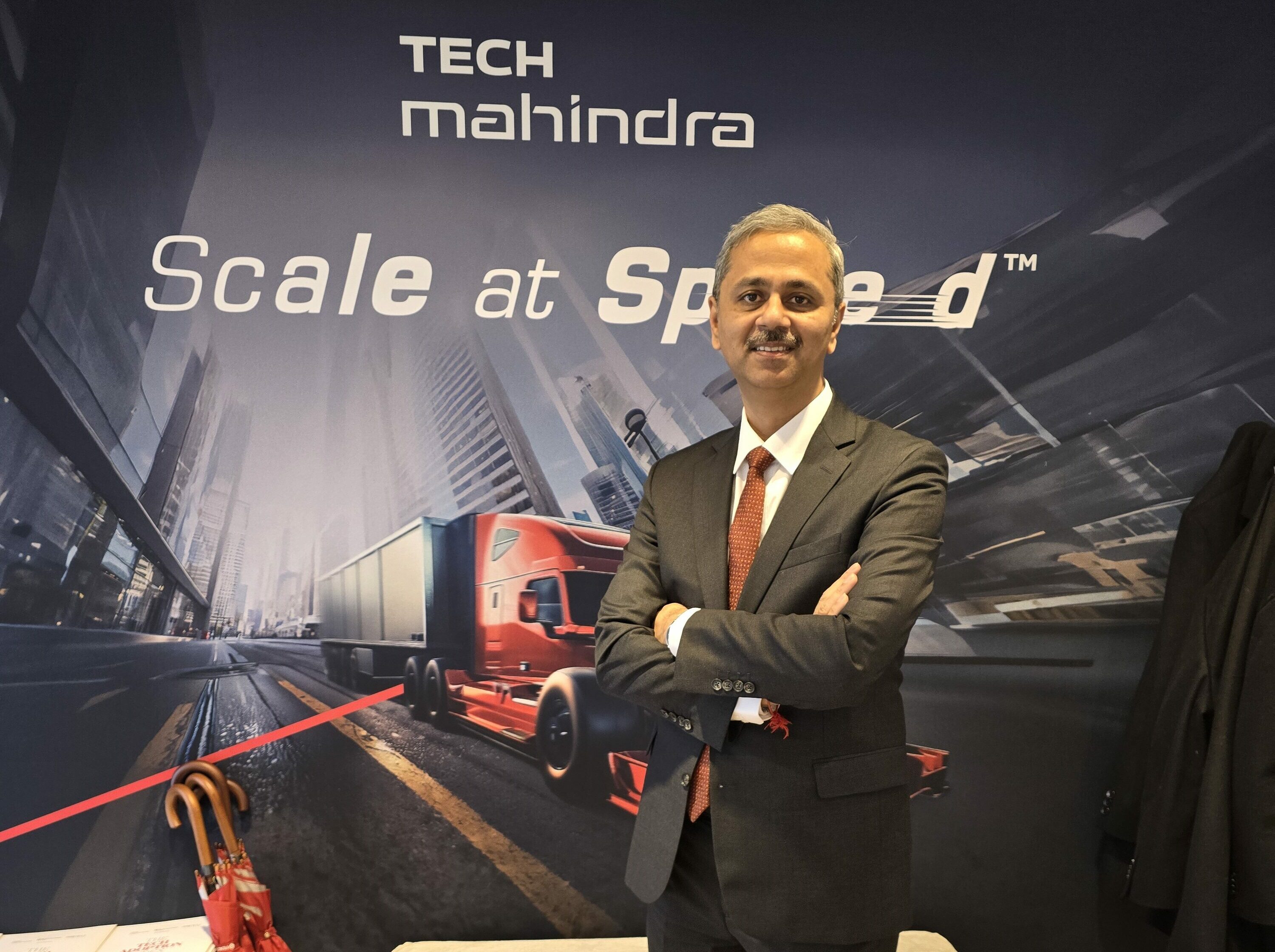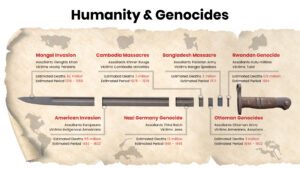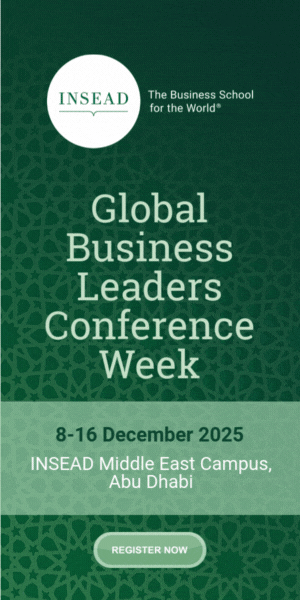Davos, Switzerland — The Middle East, Africa, and India have an important role and influence in shaping the evolving world order and driving innovation, particularly in technology adoption and sustainable practices, said Ram Ramachandran, Senior VP India, Middle East, and Africa at Tech Mahindra, India’s leading provider of technology consulting and digital solutions.
Ramachandran sat with TRENDS at Davos to discuss the key takeaways from the World Economic Forum’s Annual Meeting.
Given the presentations and discussions at Davos, what are the key challenges and opportunities facing businesses and governments in the Middle East, Africa, and India as they navigate the evolving global world order?
This year, there are a couple of things that I found noticeable. There is so much of representation of the Middle East, Africa, and India, the region I’m responsible for. That shows the growing promise of the region towards global world order and the positioning each one of these countries is seeking to establish in a rightful manner. We saw presentations from Saudi, Europe, UAE, Qatar and South Africa, all prominent countries for us. From discussions and dialogues with our peers from these countries, it is clear that some of the themes have become very clear and constant. One, of course, more macro, is the global world order as it’s emerging. I think the world is increasingly becoming multipolar, but at the same time, how do we have sensibilities established between these countries so that we have more amenable business and geopolitical structure. That’s a very prevailing theme that came about through the discussions. The second theme, which I see as an extension of last year, is intelligent enterprises backed by technologies such as AI, which is very relevant to the work we are doing.
Another theme is climate and sustainability. That doesn’t go away. Again, very relevant. And the interventions that all organizations, including us, are making. It’s very heartening to see a joint commitment towards a greener planet. From a business standpoint, it’s been very enriching to hear the impact of industry and government representatives. And also, for us, to hear the technology vendors who have also become very ubiquitous in the ecosystem we operate in. From our standpoint, we are figuring out how we collaborate much more effectively with the Middle East, Africa, and Indian markets.
We are keen on figuring out how we enable prominence in the verticals that we are specializing in, such as telecom, manufacturing, banking and financial services. The World’s Free Journal Technology Index jointly with the Wall Street Journal was a very prominent landmark achievement for us.
Basically, what are the requisites for us to scale up on technology as it moves towards more sustainable options. Also, how do we go about the adoption of many of these newer technologies like AI, cloud, say, for the telecom area, which is very important for the work we do.
What’s has been your objective for WEF in Davos this week?
They’re multiple, of course. There are the customers, there are the partners, and the ecosystem. We launched the Tech Adoption Index with the Wall Street Journal. What you see here is ‘scale at speed’ — organizations want not just to adopt technology, but they want to adopt technology at a particular velocity. So the velocity is changing, the volume is more, and the variety coming to them is immense. We have the right experience on chosen verticals and chosen service line that can help all organizations to scale at speed. With the emergence of the digital and various disruptors, all organizations are really re-looking at the fundamental way of business. And technology which used to be a back-office function has now become a strategy front of this function and a global discussion. We need to scale at speed both externally, which is primarily for customers, but also internally so remain relevant to the market for tomorrow.
What is your take on the AI discussions in Davos? How do you see this shaping up the future? What’s the trend in 2025 if we talk about AI-centric sustainable world?
One thing which we all need to do is acknowledge the fact that AI is here to stay. It will depend on organizations and individuals to ensure how AI is put to more productive use for the benefit of mankind, both on technology, sustainability, and life improvement of lifestyles. Naturally, there are two diametrically opposite schools of thought. But we believe that organizations should work toward the good AI has to offer and towards what we call the ethical AI practices that are emerging. One discussion at Davos centered around how governments are intervening to figure out and set up norms on ethical AI practices. UAE had established a minister for AI in 2017, probably the first country to do so.
AI adoption is all pervasive. The benefits of AI are to be seen in every sector. Naturally, there are people who would try to misuse it. But in the long run, I think it is for the benefit of human mankind.
Last but not least, there is always a debate if AI going to be so disruptive that is going to snatch away jobs. We believe that probably the nature of jobs will change, but it’s almost like 25 years ago when somebody said the Internet is coming and the cashier is going to go away.
Which markets are you most excited about?
The entire Middle East and Africa is an awesome market. The world’s biggest and best smart cities are emerging in the Middle East, especially the GCC region. Qatar showed the world what it could do when it hosted the World Cup, which was a very technology-led World Cup. From the sheer scale of development and innovation happening in UAE, you can say a mini Silicon Valley is emerging. We are very excited about the role that the Middle East has taken in terms of being the first adopter of many of these technologies. In fact, we believe that some of these countries are going to drive reverse innovation. We are going to see innovation happening from the Middle East outwards, which has never happened earlier. Because the world has not seen a smart city like NEOM. What emerges out of there is going to be fantastic for the world in terms of adoption and use.
Similarly, Africa is a place with the youngest population in the world, with brilliant talent who are on the cusp of innovation. We saw what mobile adoption did in Africa. Similarly, we are seeing a lot of penetration coming from Africa in terms of technology adoption. Naturally, there are areas like provisioning of internet and bandwidth, which are still challenges, but we believe that that’s also an opportunity for organizations to invest in and then be part of that growth cycle. India is on a very different growth trajectory. The GDP in India has been growing constantly between 6% and 9%, and that’s probably expected to continue for the next couple of years. There’s a lot of technological innovation that’s happening. If benchmarks have to be seen, India is producing one unicorn every week. There is a lot of adoption, usage, and investment happening in technology.
I believe India, the Middle East, and Africa, which are prominent markets for us., UAE, India, South Africa, Kenya, Nigeria, all are becoming very prominent.
How do you envision this weeklong experience in Davos, exploring the growth, new technologies, innovation, etc.?
As far as growth is concerned, there has been a lot of positivity on the ground because, after a relatively muted year, most organizations are bullish on spending on technology, be it research and development. On the technology front, we feel that this year is going to be hopefully a better year than the last couple of years. If we talk about emerging markets like India, the Middle East, and Africa, they are on accelerated spending, but at the same time, cautious about the investments they are trying to make. However, there are growing investments into technology to drive a lot of the socioeconomic benefits technology can deliver. Europe has been muted for, I think, everyone, and probably the next few quarters would show how Europe progresses.
But America, I think, again, is a lot more positive from the results, and we are expecting the technology spending to at least be on a revival path. There are certain aspects of technology which probably will have a faster acceleration because AI is not slowing down at all.
The investments into AI and AI-led initiatives across the world is only going to increase. We are seeing a lot of emerging markets picking up cloud to achieve a more pervasive last-minute technology reach. It is bringing down the cost of servicing for many of the organizations. The adoption of cloud in developing markets is also on the rise. Then there are the enabling technologies that run industries, the ERPs and the supply chain management, and the CRM net solutions, which are witnessing an upgrade after running on the legacy stack for years. Last but not least, the increasing need for computation and the resulting mushrooming of data centers and data center-related requirements. AI and cloud also need huge infrastructure. Their adoption mustn’t become a downward drag on sustainability and green.
How is Tech Mahindra bridging the gap that exists between civil society, governments, and the private and public sector? How can we collectively collaborate for the Intelligent Age?
Tech Mahindra recognizes the importance of bridging the gap between civil society, governments, and the public and private sectors, particularly in the context of the Intelligent Age. They believe organizations have a responsibility to contribute socially and are taking several steps to achieve this. A key focus is extending technology’s reach to the last mile, especially in emerging markets like Africa and India. This includes enabling telecom operators and other organizations to improve connectivity through initiatives like telecom tower rollouts, 5G infrastructure development, and fiber optic cable deployment. These efforts aim to bring the benefits of technology, such as education, to underserved communities. Tech Mahindra and the Mahindra Group are also actively involved in promoting education. Examples include initiatives like the Mahindra Group’s “Nanhi Kali” program, focused on educating girls in India, and similar programs in Africa aimed at educating the uneducated. These projects demonstrate a commitment to social responsibility and collaborative efforts for the Intelligent Age.
The other thing that we’re doing in more developing nations, for example, in South Africa, is technical trading programs aimed at making kids aware of technology. Many of them are coming to us for employment in the same initiatives we are running in some other markets in India and abroad. And of course, we develop a lot of technologies that are enabling and the clients to be better connected to citizens in terms of citizen services. We do operate a lot on the energy and utility side, so we’re working with organizations to figure out how, again, responsible energy and utility gets delivered to the last mile and so on.
Skilling, upskilling, reskilling, and the investment into that. What part of that is education as you’ve mentioned? What else ensures that teams are future proof?
The biggest asset that we have is our employees. The speed at which technology is changing, if we don’t reinvent ourselves every year, we will also not have a leadership position. From our perspective, skilling, reskilling, and redeployment are constant endeavors to make ourselves relevant in the market and also to keep pace with technology. We believe that there’s a soft skill aspect that becomes very important. And increasingly, we are seeing even the left-brain function of arts, humanities, and finance become equally critical in training aspects. So, there’s an equal balance and a more rounded technology that we can deliver back to the customers and to the markets. We have also embarked on an initiative where we have started our own university. We call it the Mahindra University, where every year we produce engineering graduates. And typically engineering graduates tend to be a lot more on the science and math side of things. So here we are trying to see how we can blend humanities, maths, science, and skills so that they become more relevant to the business needs, to the socioeconomic needs of tomorrow.
What can you tell us about the car model placed here?
That’s a very well-kept secret! Pininfarina, a renowned Italian design firm known for its work with brands like Ferrari and Bugatti, is a key part of Tech Mahindra’s offerings. Acquired by Tech Mahindra a few years ago, Pininfarina serves as the principal agency for physical form design. This allows Tech Mahindra to provide end-to-end service, from conceptual design and fabrication to manufacturing and even deployment. A prime example is the Battista, one of the world’s fastest electric cars, designed and built by Pininfarina. Complementing Pininfarina’s physical design expertise is BORN, a digital agency also acquired by Tech Mahindra. BORN specializes in content creation, user experience, and digital design, creating websites, photography, and videography for clients like Cartier. Tech Mahindra is also exploring the future of design with the emerging metaverse, including 3D holograms. The goal is to provide clients with a comprehensive experience encompassing physical, digital, and meta design. (Edited by Hilal Mir)








